Colombian cuisine is a vibrant tapestry of flavors, colors, and traditions that reflect the diversity and richness of this South American country. Each dish tells a story, embodying the unique blend of indigenous, African, and Spanish influences that have shaped the nation’s culinary landscape. From the bustling streets of Bogotá to the serene vistas of Medellín, Colombian food is a celebration of cultural heritage and gastronomic innovation.
Arepas
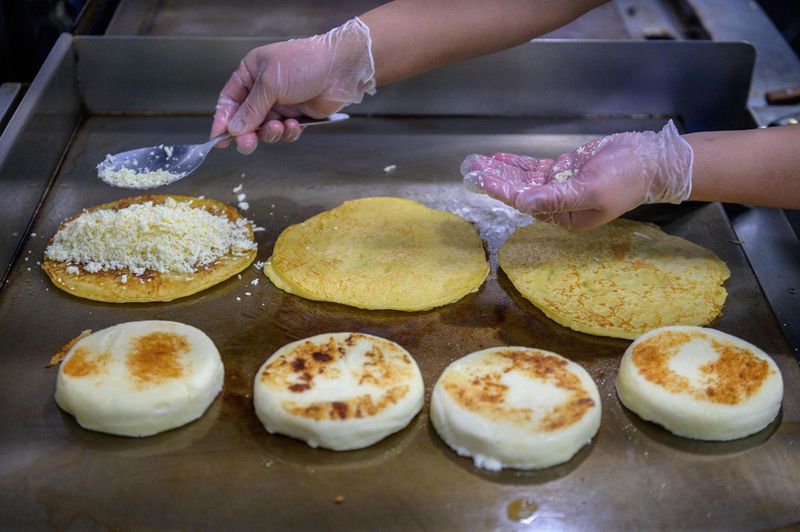
Golden and crispy, arepas captivate with their simplicity and versatility. Whether stuffed with cheese or served plain, these corn cakes are a staple on Colombian tables. Imagine biting into a warm, cheesy arepa as you wander through Bogotá’s vibrant streets.
Their origins trace back to indigenous tribes, showcasing a history as rich as their flavor. Enjoyed at breakfast or as a snack, arepas transition seamlessly between meals.
Did you know? Arepas vary regionally in Colombia, with each area boasting its own unique twist, adding to their delightful diversity.
Bandeja Paisa
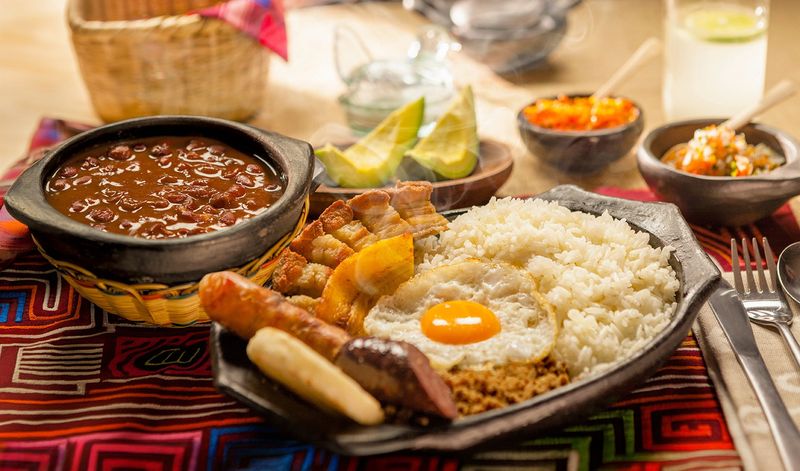
A feast for the senses, Bandeja Paisa presents a culinary panorama on a single plate. Known for its hearty portions, this dish mirrors Colombia’s landscape with its diverse elements. Beans, rice, ground beef, chorizo, fried egg, and plantains come together, creating a symphony of flavors.
Originating from the Antioquia region, Bandeja Paisa embodies the hardworking spirit of the Paisa people. Its generous servings tell stories of tradition and community.
Fun fact: The dish was initially fuel for farmers, providing energy to tackle the demanding Andean terrain.
Ajiaco
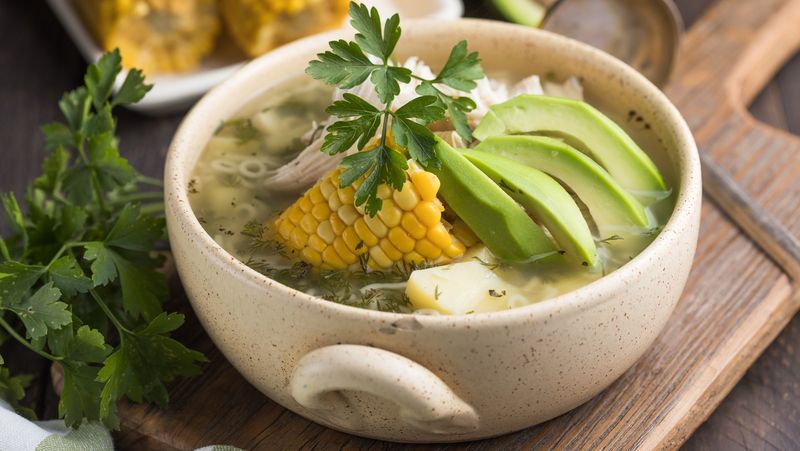
Ajiaco is a soul-warming soup that brings comfort with each spoonful. Typically made with three types of potatoes, chicken, and corn, it’s the perfect antidote to Bogotá’s chilly weather.
The inclusion of guasca, a local herb, infuses the soup with its distinctive flavor, making it a beloved dish across Colombia.
Ajiaco’s roots can be traced to the Andean tribes, and today it remains a staple, especially during festive gatherings. A dish that’s as much about flavor as it is about camaraderie.
Sancocho
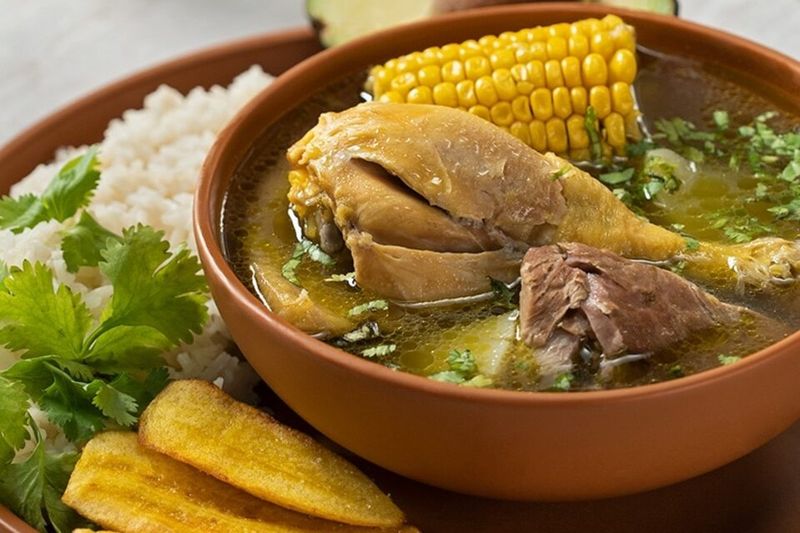
Sancocho is more than just a meal; it’s an event. Picture a hearty stew filled with chunks of tender meat, plantains, yuca, and corn simmering slowly in a pot. Eaten across different regions, each has its own flavorful variation.
The dish often marks family gatherings, where stories are shared over bowls of this nourishing stew.
Did you know? Sancocho’s roots are steeped in the Caribbean, with each island adding its own twist, making it a true cultural tapestry.
Empanadas
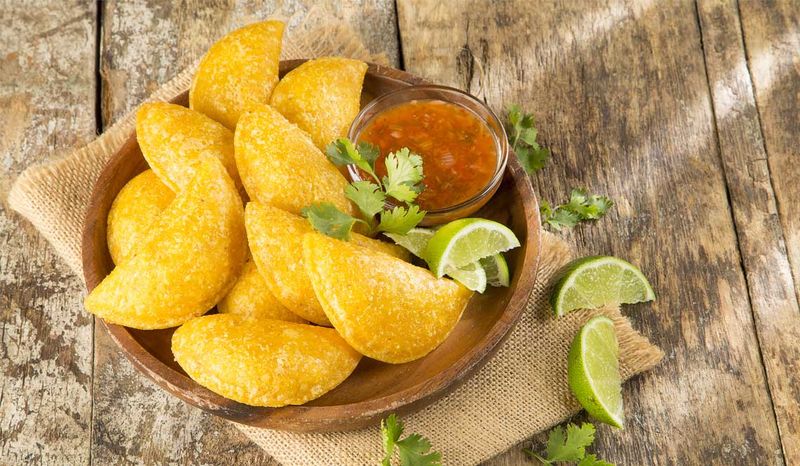
Empanadas are crispy, golden pockets of joy. Stuffed with seasoned beef, chicken, or cheese, each bite offers a delightful crunch and burst of flavor. They’re the perfect street food, enjoyed by locals and visitors alike.
These savory pastries are deeply embedded in Colombian culture, often accompanied by aji, a spicy sauce that enhances their taste.
Fun fact: Empanadas have a storied past, with variations found across Latin America, each reflecting local flavors and traditions.
Lechona
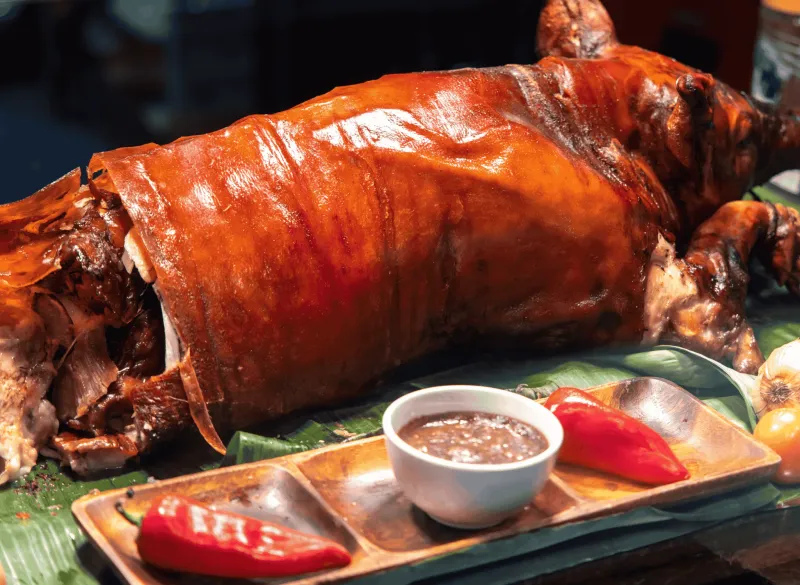
Lechona is a celebration on a platter, often served at special occasions. This dish features a whole roast pig, stuffed with a savory mixture of rice, peas, and spices, creating a flavorful symphony.
The crispy skin adds a satisfying crunch, contrasting the tender, juicy meat. It’s a dish that brings people together, often at weddings or community festivals.
Lechona’s roots stem from Tolima, where it’s cherished as a traditional dish. Its preparation is as much about skill as it is about heritage.
Cazuela de Mariscos
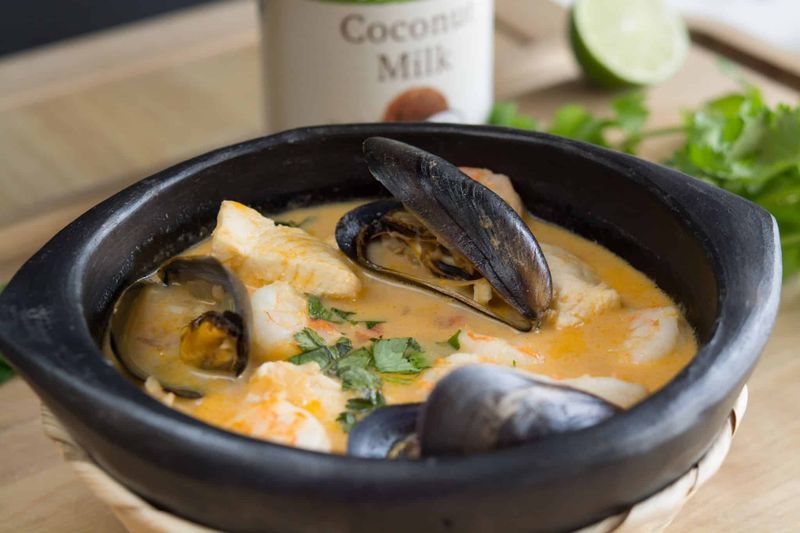
Cazuela de Mariscos is a coastal delight, bringing the ocean’s bounty to your table. This seafood stew, brimming with shrimp, fish, and clams, is enriched with coconut milk, lending a creamy texture.
Served in coastal towns, it captures the essence of Colombia’s maritime heritage, offering a taste of the sea with every spoonful.
Did you know? This dish is a favorite among tourists exploring Colombia’s stunning coastlines, celebrated for its fresh and flavorful ingredients.
Patacones
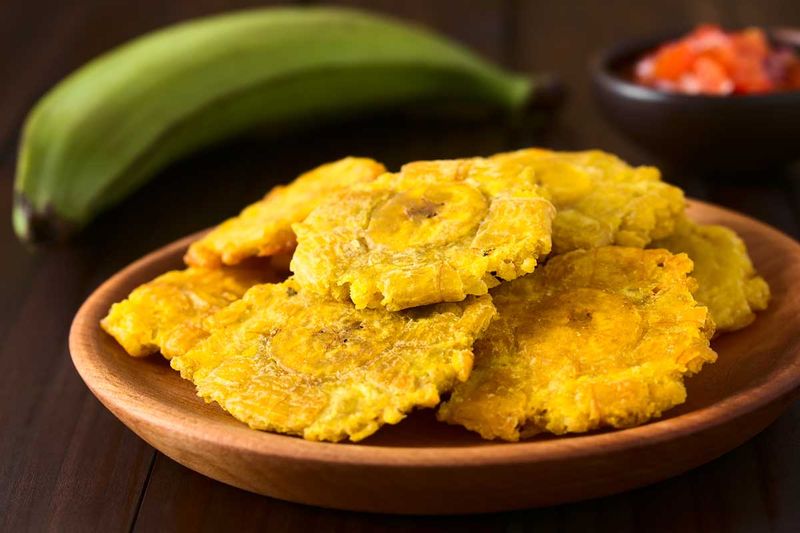
Patacones are fried green plantains that are both versatile and delicious. Crispy on the outside, tender on the inside, they’re often served as an appetizer or side dish.
These golden discs are a staple in Colombian cuisine, frequently found at family gatherings and celebrations.
Fun fact: Patacones, also known as tostones in other Latin American countries, showcase the diverse use of plantains in regional cooking, beloved for their unique texture and flavor.
Pandebono
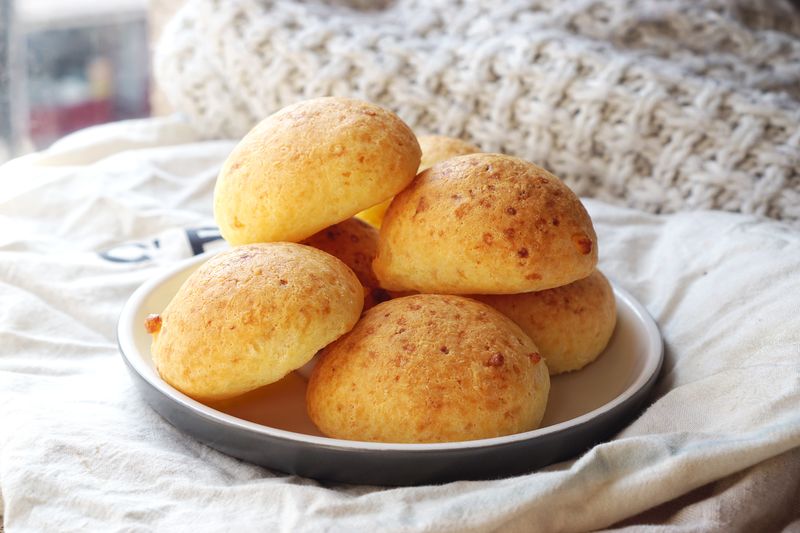
Pandebono is a cheese bread that offers comfort in every bite. Typically enjoyed fresh from the oven, its cheesy aroma and soft texture make it a beloved snack.
Originating from the Valle del Cauca region, pandebono is often enjoyed with hot chocolate, making it a popular choice for breakfast or a midday treat.
Did you know? The secret to pandebono’s unique flavor lies in the use of yucca flour, which gives it a distinct consistency and taste.
Chuleta Valluna
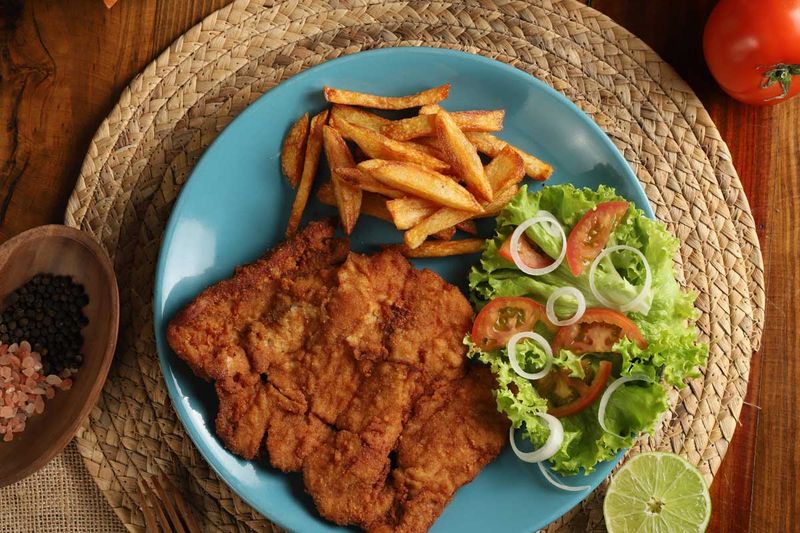
Chuleta Valluna is a breaded pork cutlet that promises a satisfying crunch. Originating from the Valle del Cauca region, it’s marinated with spices, then fried to golden perfection.
Often served with rice, salad, and plantains, this dish is a staple in Colombian households, appreciated for its rich flavor and texture.
Fun fact: Chuleta Valluna is a testament to Colombia’s ability to blend flavors, often featured in family gatherings and local eateries, highlighting its enduring popularity.
Natilla
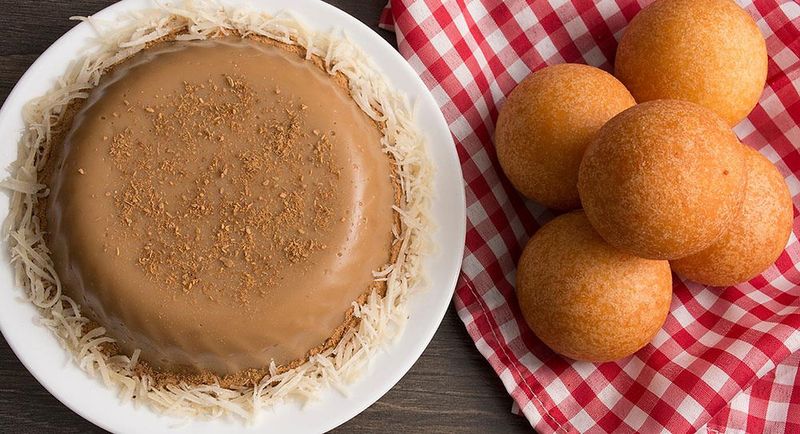
Natilla is a traditional Colombian dessert, especially popular during Christmas. This creamy custard is flavored with cinnamon and panela, offering a sweet and comforting end to any meal.
Typically served alongside buñuelos, natilla is a festive favorite, evoking memories of holiday gatherings and family traditions.
Did you know? The preparation of natilla varies by region, with some versions including coconut or other local ingredients, adding a regional twist to this classic dessert.
Buñuelos
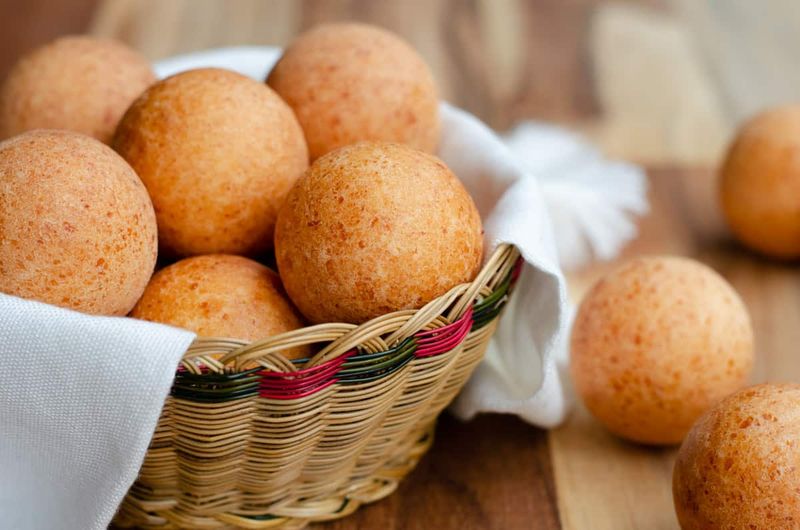
Buñuelos are festive fried dough balls that embody joy and celebration. Crunchy on the outside and soft inside, they’re often enjoyed during holidays, echoing the warmth of Colombian family traditions.
These delightful treats pair perfectly with a steaming cup of hot chocolate, creating a comforting combination.
Fun fact: Though enjoyed year-round, buñuelos hold a special place in Christmas celebrations, symbolizing unity and happiness across Colombian households.
Leave a comment